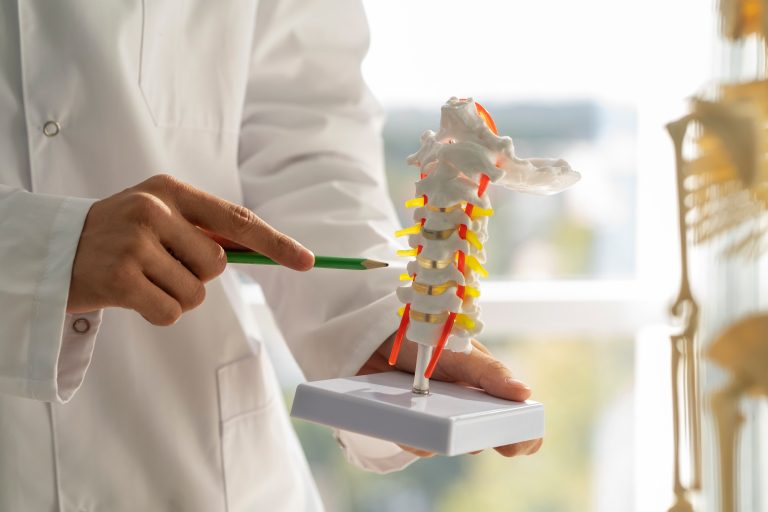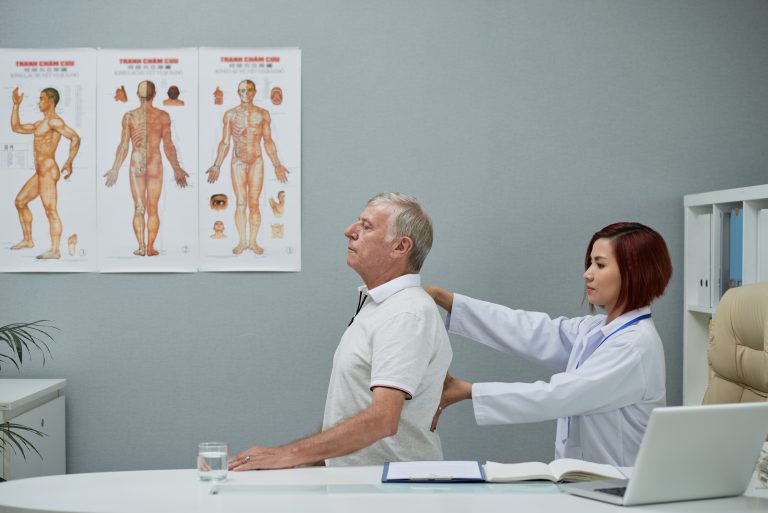Spinal decompression therapy is a non-surgical treatment aimed at relieving back pain and other symptoms associated with spinal conditions such as herniated discs, degenerative disc disease, and sciatica. This therapy gently stretches the spine to alleviate pressure on the spinal discs and nerves, promoting healing and improving function. At Spinal Recovery Center in Warren, Michigan, we offer state-of-the-art spinal decompression therapy as part of our comprehensive approach to spinal health. This article explores what spinal decompression therapy is, how it works, and its benefits.
Understanding Spinal Decompression Therapy
Spinal decompression therapy involves the use of a specialized table and computer-controlled traction to create negative pressure within the spinal discs. This negative pressure helps retract herniated or bulging discs and increases the space between vertebrae, reducing nerve compression and promoting the flow of nutrients and oxygen to the affected area.
Key objectives of spinal decompression therapy:
- Relieve Pain: Reduce pressure on spinal nerves to alleviate pain.
- Enhance Healing: Promote the healing of damaged discs and surrounding tissues.
- Restore Function: Improve mobility and overall spinal function.
How Spinal Decompression Therapy Works
- Patient Positioning
The patient lies on a specialized table, either face down or face up, depending on the specific treatment protocol. A harness is placed around the pelvis and another around the torso to secure the patient in place.
- Controlled Traction
The table is connected to a computer that controls the traction force and angle. The traction device gently pulls the spine, creating negative pressure within the discs.
- Therapeutic Stretching
This stretching relieves pressure on the spinal discs, reducing herniation and bulging. The process also helps increase the space between the vertebrae, which can alleviate nerve compression and improve nutrient flow to the discs.
- Session Duration
A typical spinal decompression session lasts between 30 to 45 minutes. The number of sessions required varies depending on the patient’s condition and response to treatment.
Conditions Treated with Spinal Decompression Therapy
Spinal decompression therapy can effectively treat a variety of spinal conditions, including:
- Herniated Discs: Bulging or ruptured discs that press on spinal nerves.
- Degenerative Disc Disease: Age-related wear and tear of the spinal discs.
- Sciatica: Pain that radiates along the sciatic nerve, often caused by herniated discs or spinal stenosis.
- Spinal Stenosis: Narrowing of the spinal canal that compresses the spinal cord and nerves.
- Facet Syndrome: Pain from the joints between the vertebrae.
- Pinched Nerves: Nerve compression due to herniated discs or other spinal issues.
Benefits of Spinal Decompression Therapy
- Non-Surgical and Non-Invasive
Spinal decompression therapy offers a non-surgical, non-invasive alternative to traditional back surgery, reducing risks and recovery time.
Benefits of non-surgical treatment:
- No Incisions: Eliminates the need for surgical cuts and the associated risks of infection and complications.
- Minimal Recovery Time: Patients can often resume normal activities more quickly than with surgical recovery.
- Reduced Risk: Lower risk of complications compared to surgical procedures.
- Pain Relief
By reducing pressure on the spinal nerves and discs, spinal decompression therapy can provide significant pain relief.
Pain relief mechanisms:
- Nerve Decompression: Relieving pressure on compressed nerves reduces pain and discomfort.
- Disc Rehydration: Improved nutrient flow helps rehydrate and heal damaged discs, reducing pain over time.
- Improved Mobility and Function
Spinal decompression therapy can enhance mobility and overall spinal function, allowing patients to move more freely and comfortably.
Mobility benefits:
- Increased Flexibility: Reduced disc pressure allows for greater spinal flexibility and range of motion.
- Enhanced Function: Improved spinal health leads to better overall function in daily activities.
- Long-Term Healing
Spinal decompression therapy supports the body’s natural healing processes, promoting long-term disc health and preventing future problems.
Healing benefits:
- Nutrient Flow: Enhanced circulation of essential nutrients to the discs supports natural healing.
- Disc Rehydration: Improved fluid exchange helps maintain disc health and prevent further degeneration.
What to Expect During Spinal Decompression Therapy
- Initial Consultation
Your first visit will include a comprehensive consultation to assess your condition, medical history, and suitability for spinal decompression therapy.
Consultation steps:
- Health History Review: Discuss your symptoms, medical history, and previous treatments.
- Physical Examination: Perform a physical exam to evaluate your spine and identify the source of your pain.
- Diagnostic Imaging: X-rays or MRI scans may be used to get a detailed view of your spinal condition.
- Customized Treatment Plan
Based on the consultation and examination results, a customized treatment plan will be developed to address your specific needs and goals.
Treatment plan components:
- Session Frequency: Determining the number and frequency of sessions required for optimal results.
- Complementary Therapies: Incorporating other treatments such as physical therapy, chiropractic care, or massage therapy as needed.
- Treatment Sessions
During each session, you will be comfortably positioned on the decompression table, and the therapy will be administered according to your customized plan.
Session details:
- Comfortable Positioning: You will be positioned comfortably on the table.
- Controlled Stretching: The table will slowly and gently stretch your spine.
- Session Duration: Each session typically lasts about 30 to 45 minutes.
- Post-Treatment Care
After the session, your chiropractor may recommend additional therapies or exercises to enhance the benefits of spinal decompression.
Post-treatment recommendations:
- Exercises: Specific exercises to strengthen the spine and support healing.
- Lifestyle Adjustments: Advice on posture, ergonomics, and activities to prevent future problems.
- Follow-Up Visits: Regular follow-up visits to monitor progress and adjust the treatment plan as needed.
Why Choose Spinal Recovery Center for Spinal Decompression Therapy?
At Spinal Recovery Center in Warren, Michigan, we are dedicated to providing effective, non-surgical treatments for spinal conditions. Our experienced team of chiropractors and physical therapists utilizes state-of-the-art spinal decompression technology and personalized treatment plans to help you achieve lasting relief and improved spinal health.
For more information or to schedule a consultation, visit our website or call us directly. Let us help you find relief from spinal conditions and support your journey to better spinal health.




